This savory colcannon with kale recipe is like having buttery keto mashed potatoes, made with low-carb rutabaga. The addition of tender sautéed greens creates a cozy Irish comfort food to enjoy any time of year.
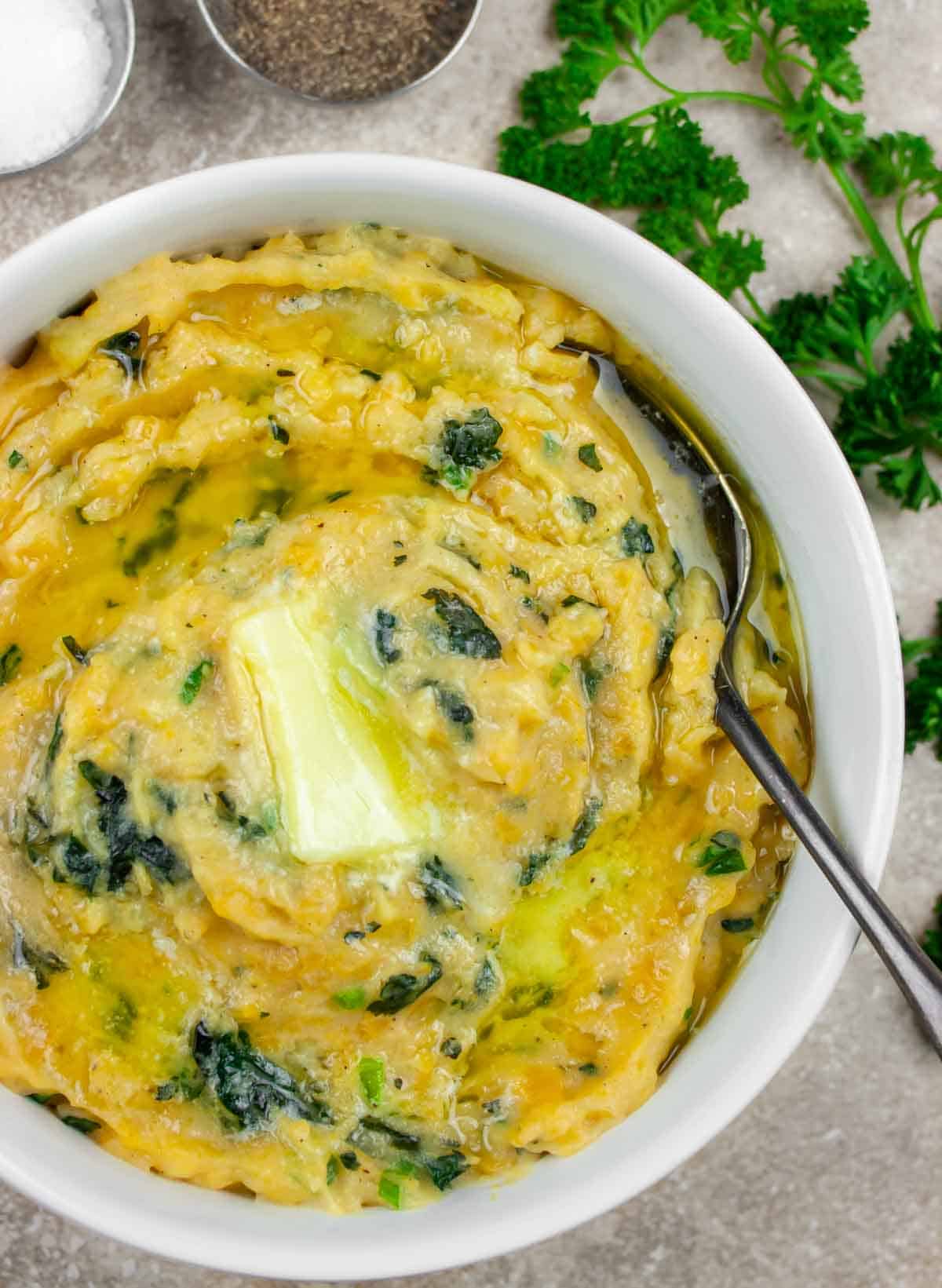
Jump to:
- What is Colcannon?
- Ingredients
- What is a rutabaga?
- What do rutabagas taste like?
- Is rutabaga keto?
- Is rutabaga low-FODMAP?
- Rutabaga nutrition
- How to cook rutabaga
- Rutabaga substitute
- If you can't find a potato alternative
- Instructions
- Making AIP colcannon
- What to serve with colcannon
- Pair with these main courses
- Variations and add-ins
- FAQ
- More low-carb side dish recipes you might like
- 📖 Recipe
- 💬 Comments
Perhaps every Irish family has their own version of this classic comfort food. This Keto Colcannon with Kale and Rutabaga takes everything you love about mashed potatoes and buttery greens and combines them into a savory, cozy, low-carb side dish that uses the perfect potato substitute - the humble, often overlooked rutabaga.
Colcannon is a traditional Irish side dish that is perfect for a St. Patrick's Day meal of Keto Irish Stew, soft Keto Pull-Apart Rolls, and finished with a dessert of green Matcha White Chocolate Cookies. However, it's also a perfect mashed potatoes substitute that the entire family will love and will earn its place as a staple on your dinner table any time of year or as a delicious holiday side dish.
What is Colcannon?
Colcannon is a classic Irish dish that is traditionally made with creamy, buttery mashed potatoes mixed with cabbage or kale. Today, in America, we often see it served as part of a St. Patrick’s Day feast. Colcannon mash made with rutabagas is the perfect low-carb substitute for high-starch potatoes and is also FODMAP-friendly.
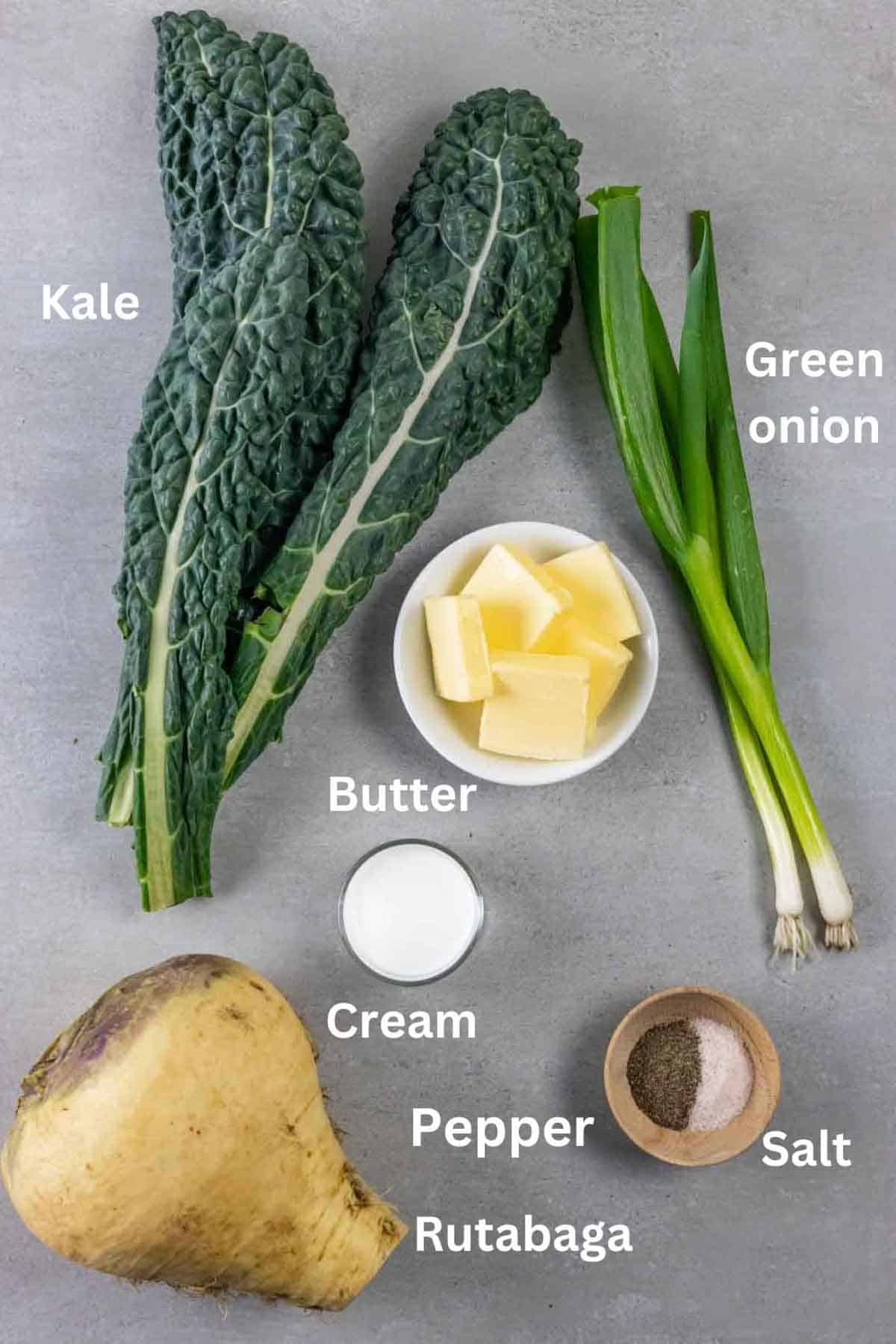
Ingredients
This easy recipe takes just a few simple ingredients (see below for AIP substitutes):
- Rutabaga – they should be firm and fresh
- Butter – grass-fed is best. I love Kerrygold because it has a superior flavor to non-grass-fed butter.
- Kale or cabbage leaves – either are traditional. Use washed, de-stemmed and shredded or sliced kale. If using cabbage, see my post on How to Shred Cabbage for easy ways to break down the head and make perfect shreds.
- Heavy whipping cream – I like to add a touch of cream because it helps to create a smooth, velvety texture and makes the dish extra savory. If you don't have cream, you can use more butter or your favorite milk alternative.
- Green onions – use the green part only for low-FODMAP
- Salt and Pepper – to bring the flavors together
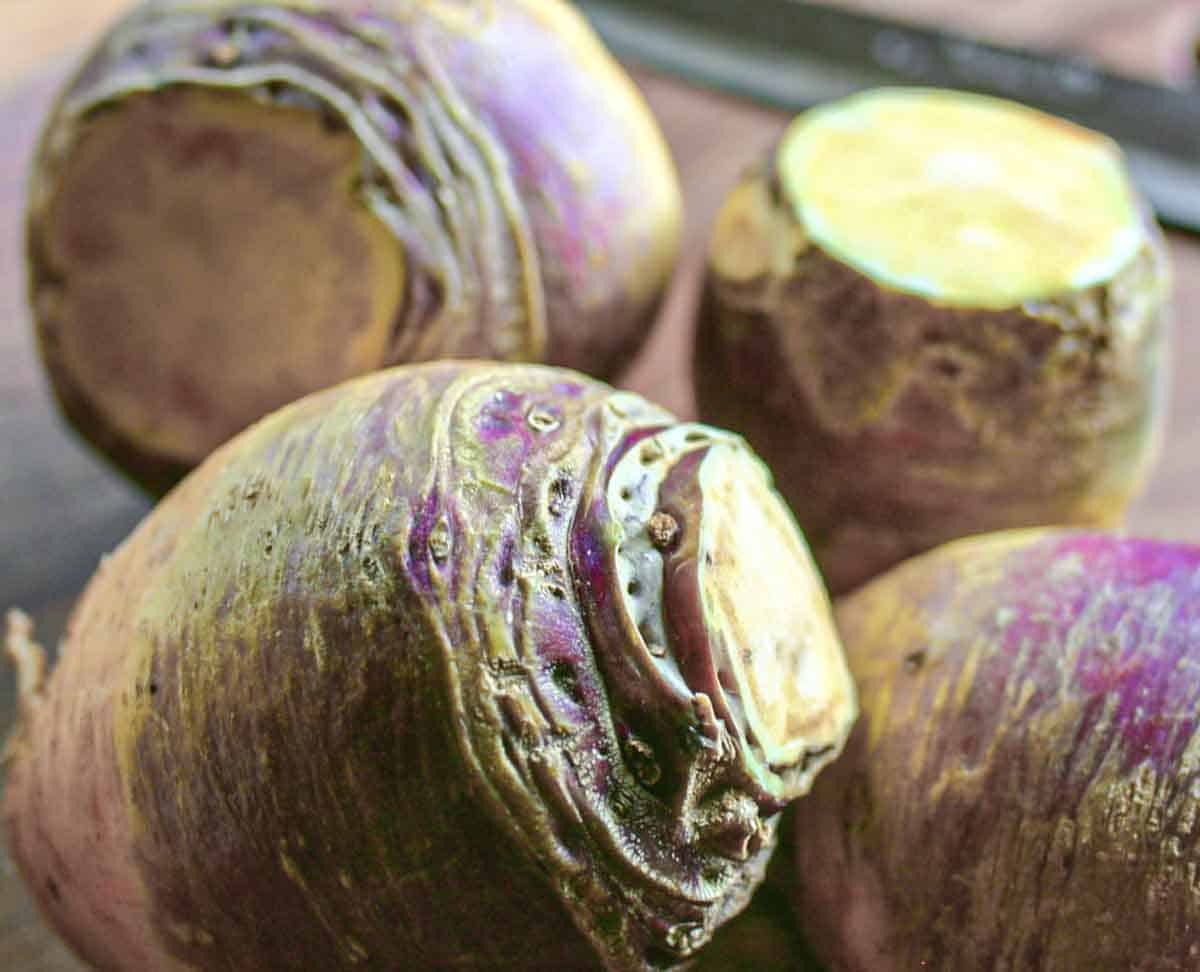
What is a rutabaga?
Rutabagas look like giant turnips and are, in fact, a cross between cabbage and turnips. They are a root vegetable belonging to the Brassica genus of plants that includes cabbage, cauliflower and turnips and are also known by the names "swede" and "Swedish turnip". Turnips are white and purple, where rutabagas have mostly yellowish and purple skin and are generally a bit bigger. Some rutabagas can grow very large and weigh upwards of 3 pounds.
When cut, the flesh is yellowish in color, but will turn light orange when cooked.
What do rutabagas taste like?
Rutabagas are very flavorful, are slightly peppery and have a slight bitterness. When cooked, they become sweeter and have a taste similar to potatoes.
Rutabagas can be a substitute for potatoes in pretty much any recipe. They make amazing low-carb cheesy mashed potatoes and are delicious in this Herb Roasted Rutabagas Recipe, as well.
Is rutabaga keto?
Yes - they fit perfectly into a low-carb keto diet. They contain fewer carbs than potatoes and can be enjoyed in moderation. One cup of cooked potato has about 32g net carbs, where 1 cup of rutabaga has about 9g net carbs.
Is rutabaga low-FODMAP?
Yes - rutabaga is a nutritious low-FODMAP vegetable. It's FODMAP-friendly in quantities of up to 1 cup.
Rutabaga nutrition
Rutabagas provide substantial amounts of vitamins and minerals, such as calcium, magnesium, phosphorus, potassium, vitamin C and B vitamins. They are also very high in fiber and low in carbohydrates.
These roots are high in beta-carotene and antioxidants which are helpful for warding off disease and play a protective role in skin aging.
How to cook rutabaga
There are a few methods for cooking the perfect rutabaga mash:
Pressure cooking
This is my favorite way to cook rutabagas (and most of my veggies). Pressure cooking helps to retain essential nutrients and flavor and cooks rutabagas very quickly. I use a stove-top pressure cooker, but you can also use an Instant Pot.
Rutabagas will cook up soft and mashable when cooked at high pressure for 10 minutes.
Steaming
Steaming is a great way to cook your veggies and still keep nutrients locked in. It doesn't cook your rutabagas as quickly as pressure cooking, but it works really well. Rutabagas will take about 25 minutes to cook when steamed.
I used to steam all of my veggies before I got a pressure cooker. I used a digital food steamer for many years and love its 'set it and forget it' functionality.
Boiling
Boiling rutabagas are a good option if you don't have a pressure cooker or steamer. They take about 20-30 minutes to become fork-tender. Keep in mind that boiling will leach some of the nutrients and flavor into the water. However, it will still make a delicious colcannon.
Rutabaga substitute
Can't find a rutabaga? Try these root vegetables you can use as a rutabaga substitute:
- Celeriac – mashed celeriac is a flavorful low-carb alternative to potatoes and is also a tasty low-FODMAP vegetable in servings of up to 75g. Larger servings are moderate in mannitol content.
- Turnips – these are an easy to find potato replacement and can be used just like rutabagas. Substitute turnips in any way that you would use a potato.
If you can't find a potato alternative
If you’re in a serious pinch and can only find potatoes, there is a way to still use them and decrease their starch (carb) content while increasing the pre-biotic benefits, as well.
Potatoes contain ‘resistant starch’. That means when they are cooked and refrigerated (or frozen), some of the starch undergoes a change that becomes resistant to digestion. After potatoes are cooked and refrigerated for 24 hours or more, up to about 4-5% of the starch may become ‘resistant starch’. Check out this great article about resistant starch.
If you need a potato ‘fix’ (I feel you…!), substitute half of the mashed rutabaga with refrigerated mashed potatoes.
Instructions
Making colcannon is so easy – it requires just a few steps.
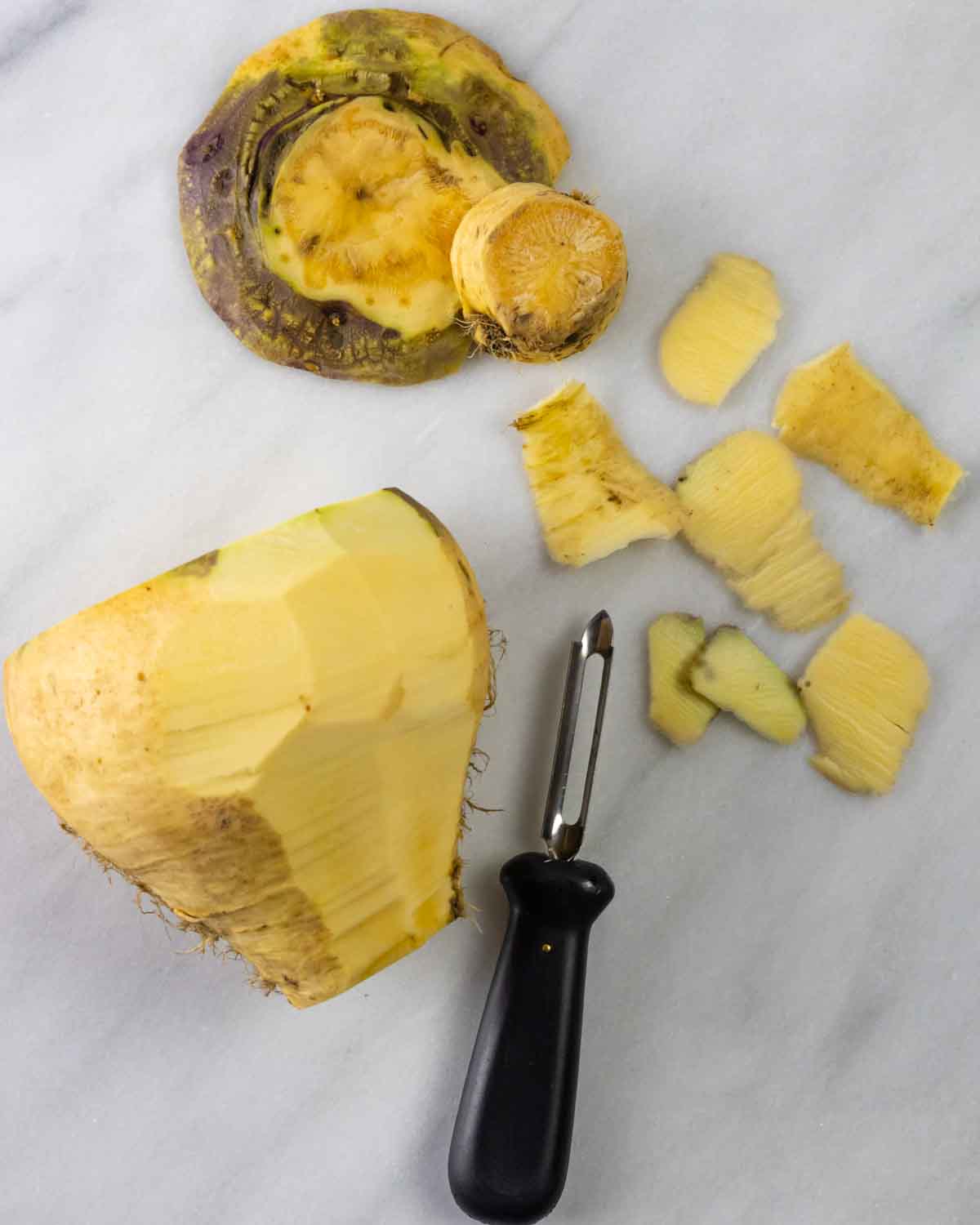
Cut off the top and bottom and peel the rutabaga.
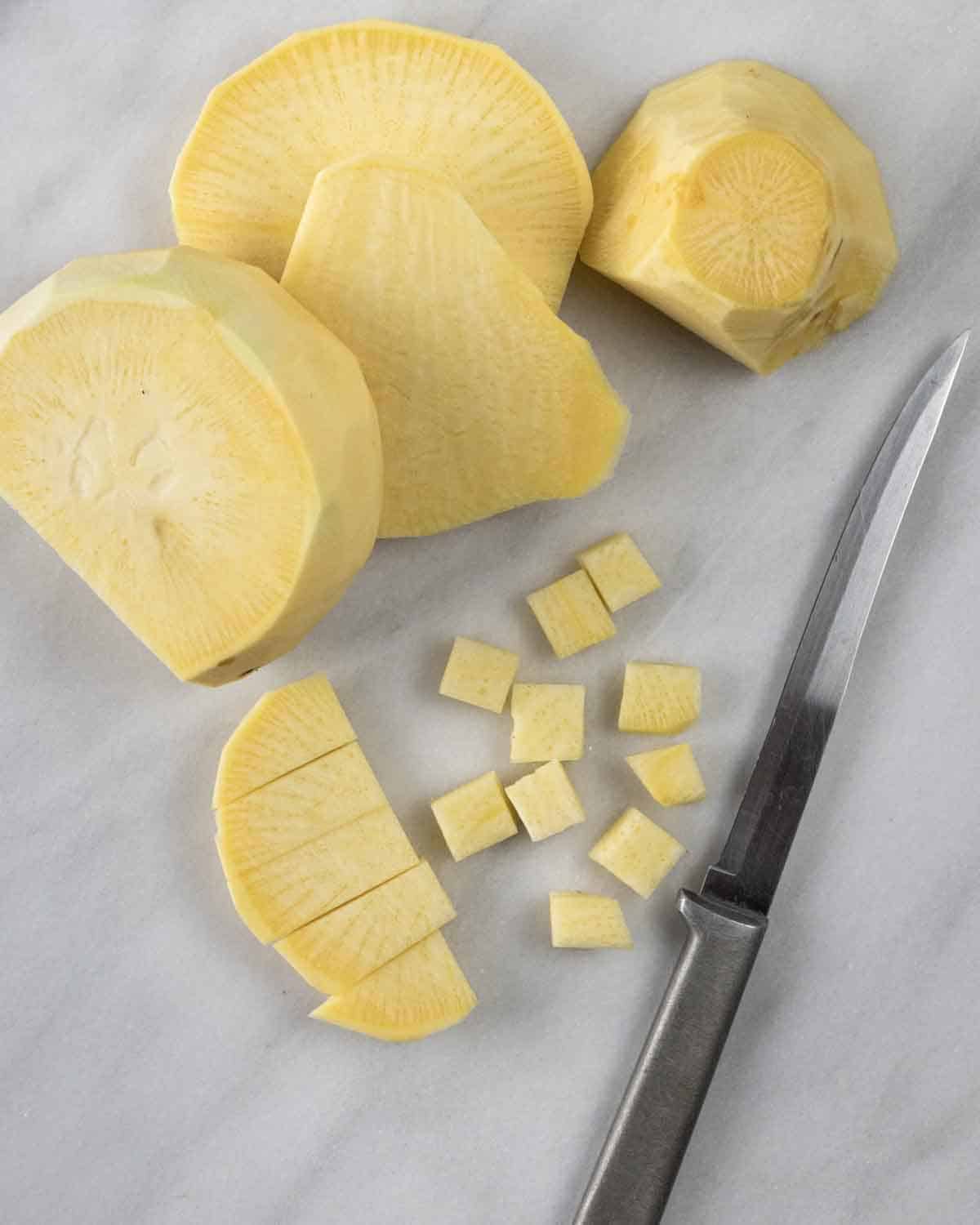
Cut into ½ - ¾ inch cubes.
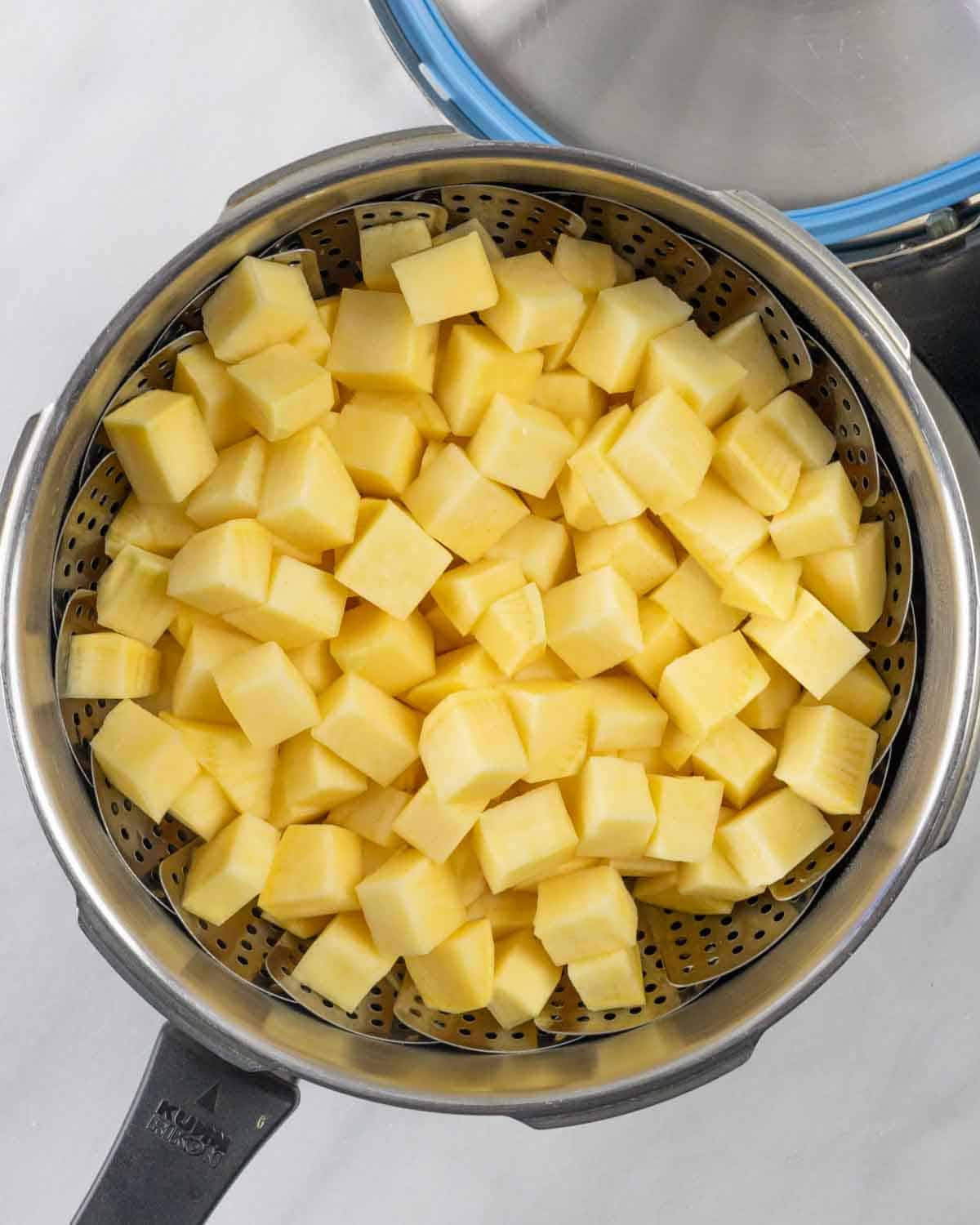
- Place the cubes in a pressure cooker, steamer or in a pot to boil. Read more on cooking in How to Cook Rutabaga, above.
- Cook until fork tender
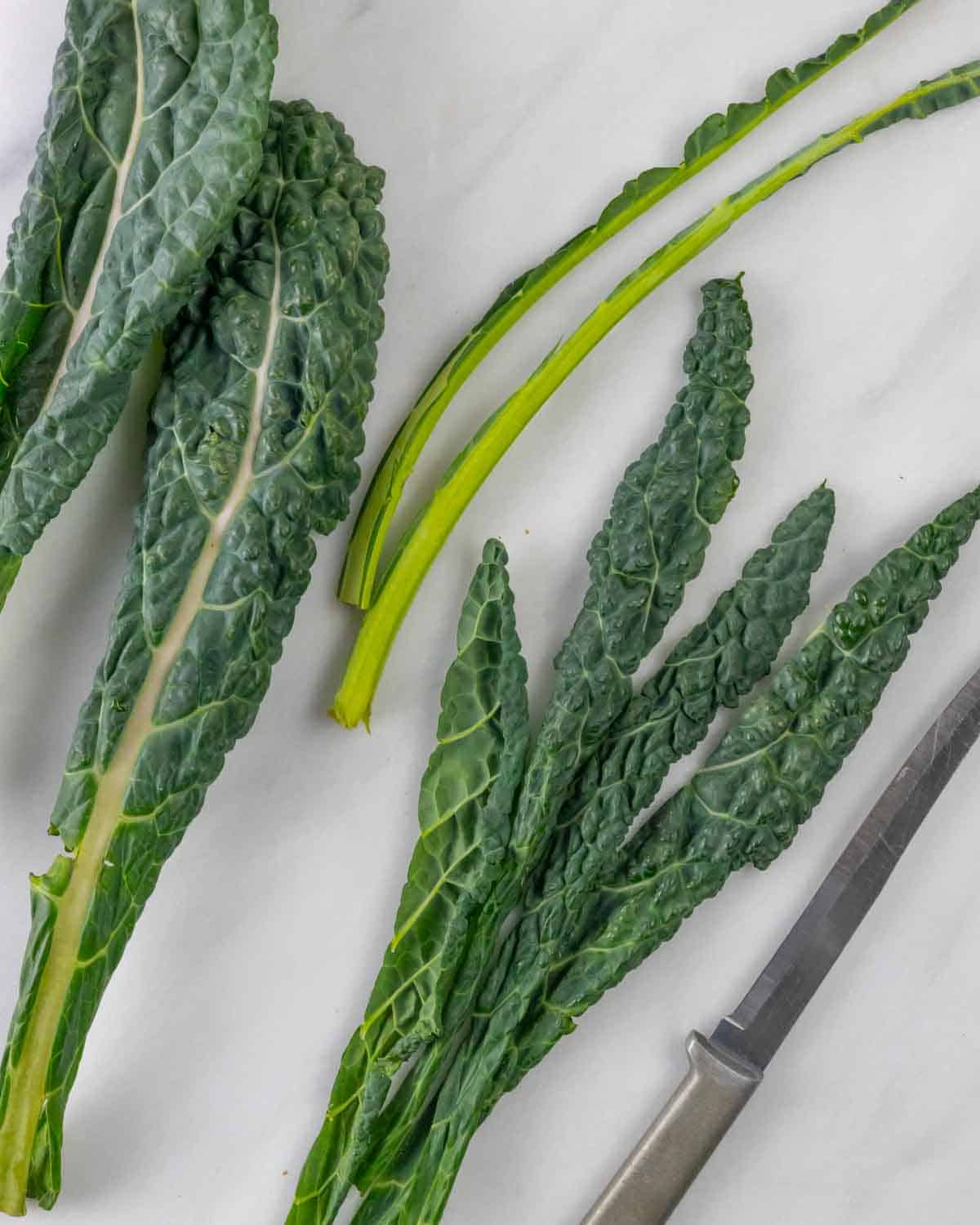
Wash the kale and remove the stems.
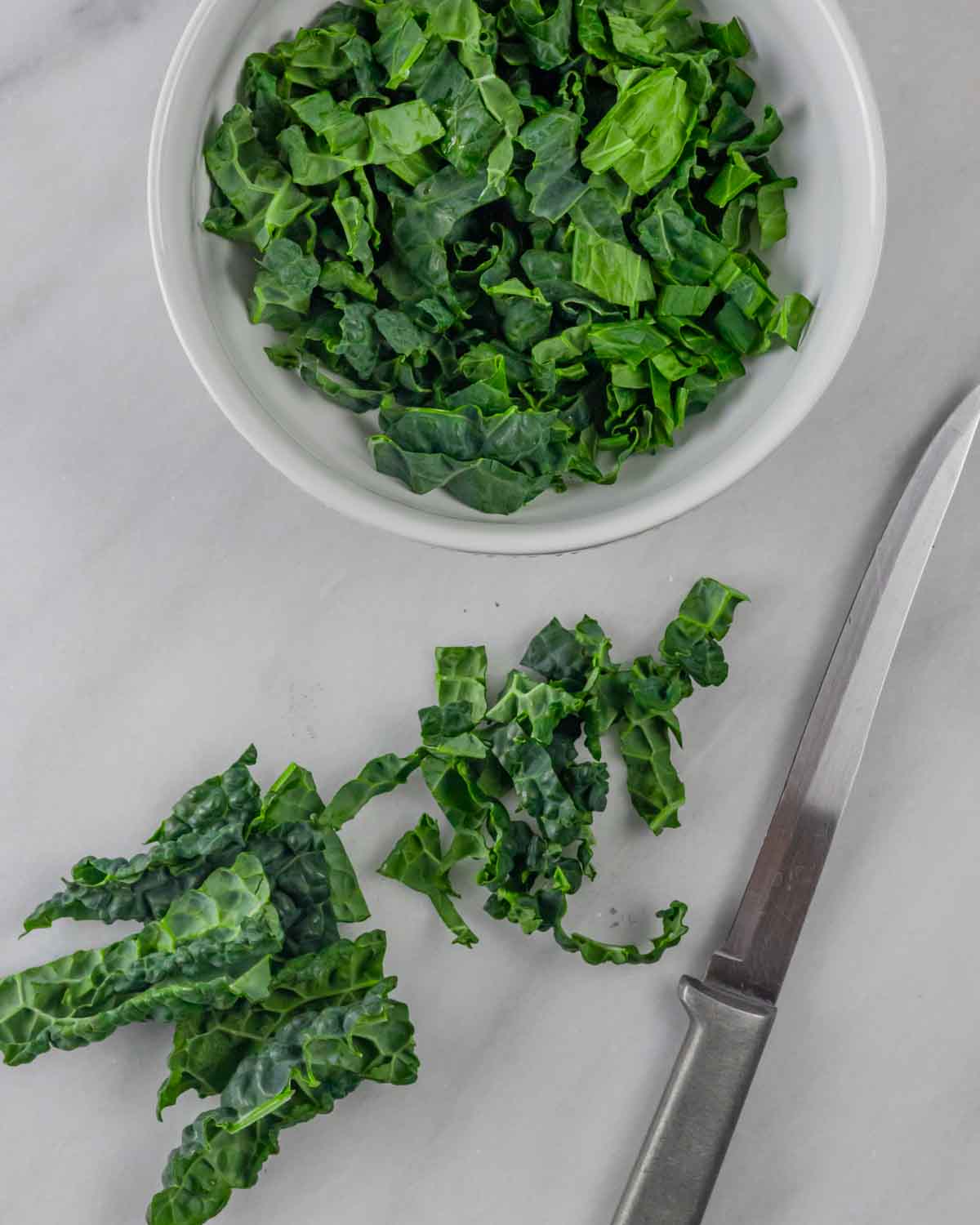
Slice or tear into small pieces.
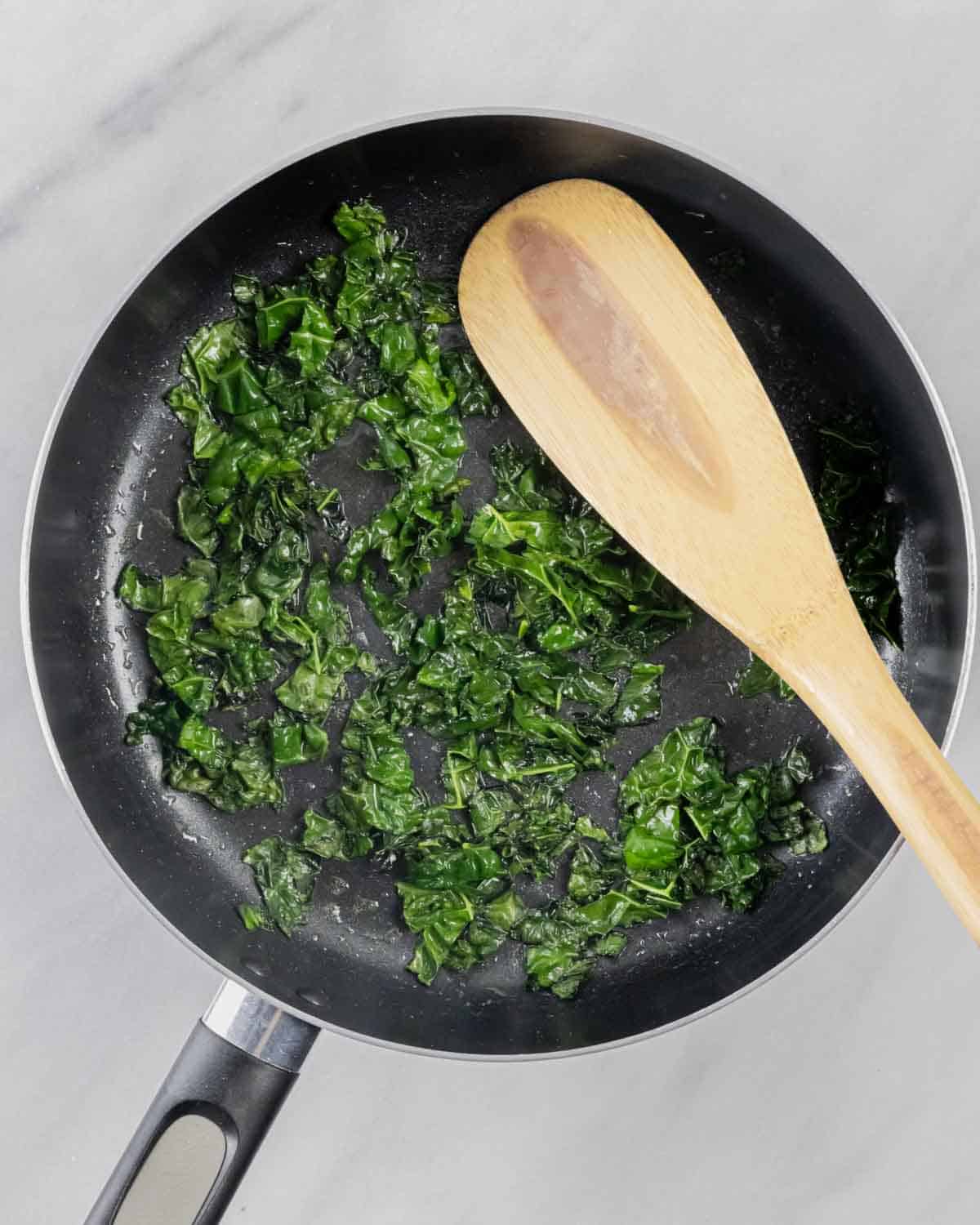
Add two tablespoons of butter to a skillet and sauté on low heat until the kale is slightly tender, about 5 minutes.
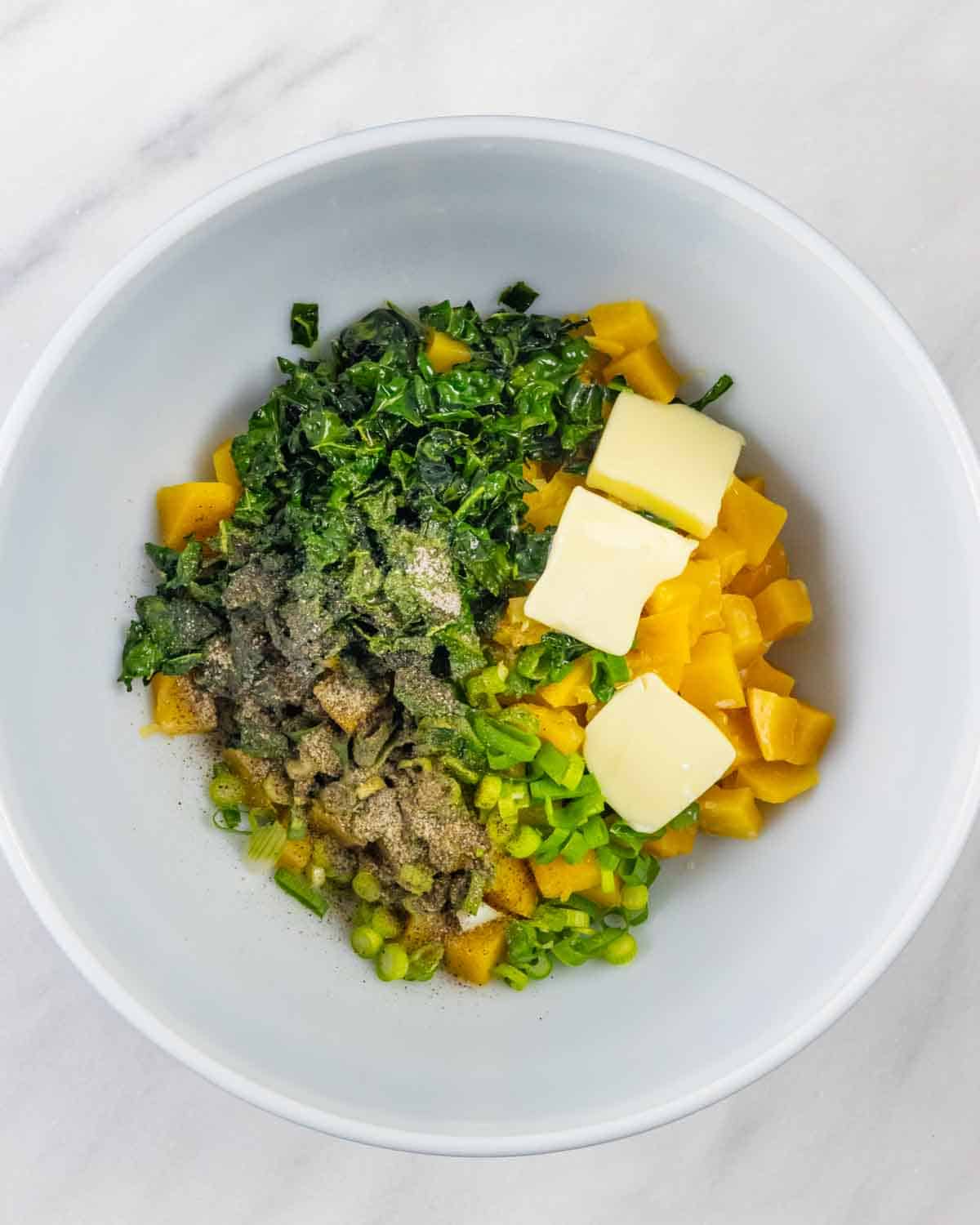
Place all of the ingredients into a large bowl.

Mash with a potato masher, pastry cutter (which is perfect for this task) or use a hand mixer and serve.
Making AIP colcannon
There are a few easy substitutions to make the best AIP version:
- Replace the butter – use coconut cream or olive oil
- Replace the cream – use coconut milk or some homemade bone broth as a dairy substitute
- Add herbs and omit the pepper – consider adding a small pinch of mace, sage, thyme and/or savory or grate some fresh horseradish for a touch of heat
What to serve with colcannon
Colcannon with rutabaga is a perfect keto side dish that can take the place of mashed potatoes or mashed cauliflower at any meal, any time of year.
- Your favorite stew – I absolutely love to serve this with Keto Irish Stew. Heap some colcannon in a bowl and cover it with this savory stew.
- Fried Cabbage with Sausage – serve as a base or alongside this easy skillet meal
- Colcannon with bacon – crumble crispy bacon on top
- Colcannon and corned beef – for a quick meal, top a bowl with some Corned Beef Meatballs or serve with corned beef brisket
- Mashed potato substitute – as a great side for Smoked Turkey Thighs, or your holiday Roasted Turkey
- Make an easy breakfast – top with a fried egg (and bacon, sausage or ham - so good!)
Pair with these main courses
Try this savory side dish with these dinner favorites.
Variations and add-ins
- Finely diced ham or crumbled sausage – mix in for decadent salty goodness
- Sautéed leek – thinly slice about half of a leek (green part only for low-FODMAP), sauté in butter or olive oil until soft and stir in
- Replace the butter – with ghee
- Garlic or garlic-infused olive oil – sauté some garlic or add some garlic-infused olive oil, which is a flavorful low-FODMAP option
- Cheese – who loves cheesy mashed potatoes? Stir in some of your favorite shredded cheese or blue cheese to the hot colcannon.
- Add some spices – thyme, savory, a pinch of nutmeg or mace, powdered sage or fresh sage sautéed in butter until crisp
- Sour cream – adds extra creaminess and bit of tang
- Make colcannon cakes – form into patties and fry in butter, oil or bacon grease until crisp
- Paleo and vegan colcannon – simply replace the butter with your favorite butter alternative and use coconut cream or nut cream to add a creamy texture
FAQ
Rutabagas are lower in carbs and calories, making them a great option for a low carb keto lifestyle or if you’re trying to lose weight. Rutabagas and potatoes are both nutritious, but rutabagas are much easier to fit into a low-carb diet.
Rutabagas have a higher fiber content than potatoes and require a longer cooking time. They don’t exactly have the same smooth mouth-feel as starchy potatoes, but they do soften when fully cooked.
Colcannon can be stored in an airtight container in the refrigerator for 3-5 days.
If you want to save some colcannon for later, you can freeze it in any air-tight container or even in freezer bags, for up to 6 months.
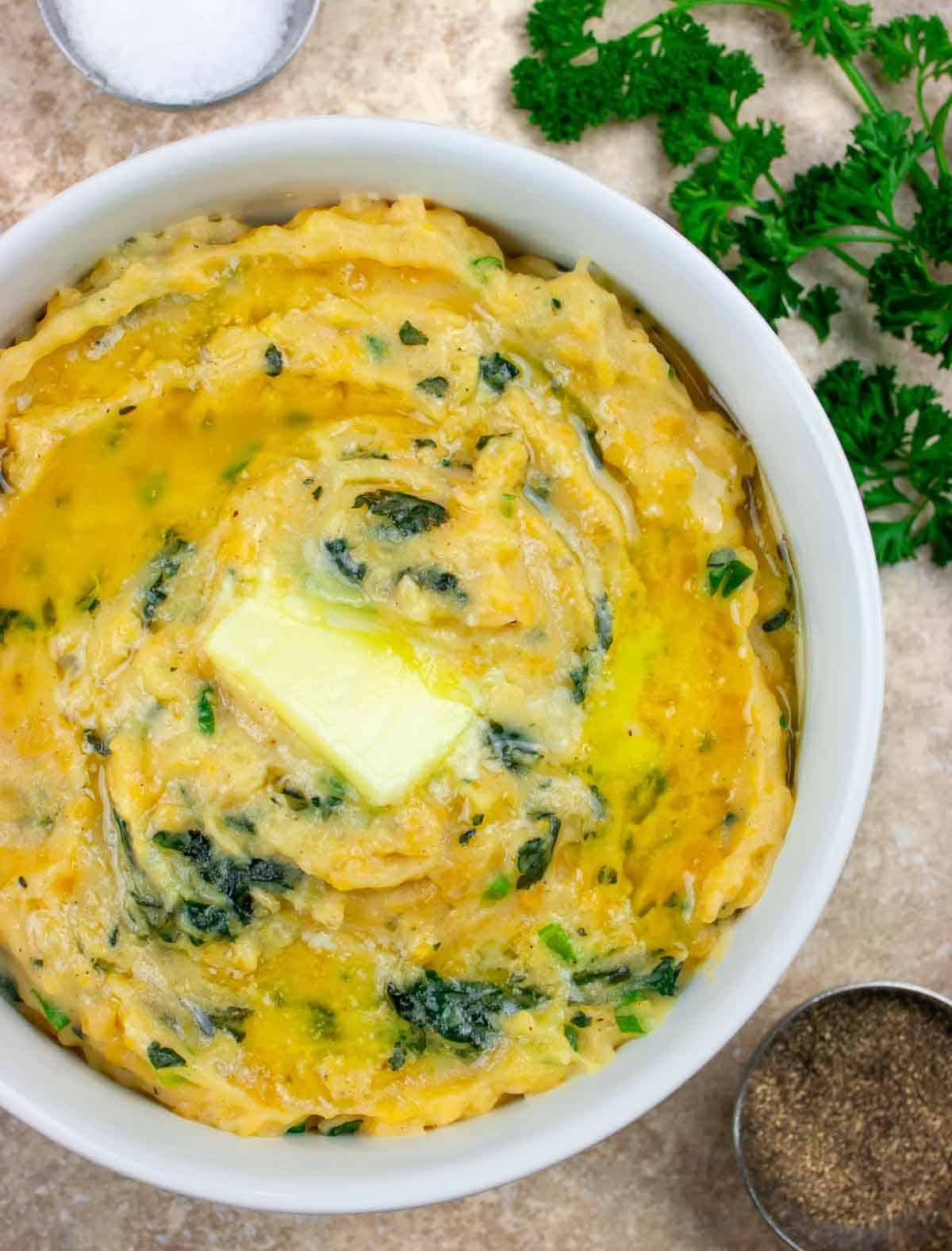
More low-carb side dish recipes you might like
📖 Recipe

Keto Colcannon with Kale and Rutabaga
Ingredients
- 2 pounds rutabaga (about 3 medium sized)
- 5 tablespoons butter (divided)
- 2 cups kale (shredded - about 4 large leaves)
- 1 teaspoon salt (plus a pinch)
- ½ teaspoon black pepper
- 2 tablespoons heavy whipping cream
- 2 green onions (green part only for low FODMAP)
Instructions
Prepare the rutabaga
- Cut off the top and bottom and peel the rutabaga with a vegetable peeler.
- Chop the rutabaga into ½-¾ inch cubes.
Boiling cook method
- Add the rutabaga cubes to a stock pot and add enough water to cover. Add a pinch of salt.
- Bring to a boil and boil for about 20 minutes, or until fork tender. Drain.
Pressure cooking method
- Add chopped rutabagas to your pressure cooker and cook at high pressure for 10 minutes. Use the natural release or quick release method. Either is fine.
Steaming cook method
- Add the chopped rutabaga to your vegetable steamer and steam for about 25 minutes or until soft.
Prepare the kale
- Wash the kale, remove the stems and chop or tear into small pieces.
- Sauté in 2 tablespoons of butter until soft, about 5 minutes
Combine and serve
- In a large bowl, mash the cooked rutabaga with the remaining butter, salt, pepper, kale, cream and green onion.
- Transfer colcannon to a serving bowl and top with more butter (if desired) and garnish with more chopped green onion (optional)
Notes
Variations and add-ins
- Finely diced ham or crumbled sausage – mix in for decadent salty goodness
- Sautéed leek – thinly slice about half of a leek (green part only for low-FODMAP), sauté in butter or olive oil until soft and stir in
- Replace the butter – with ghee
- Garlic or garlic-infused olive oil – sauté some garlic or add some garlic-infused olive oil, which is a flavorful low-FODMAP option
- Cheese – who loves cheesy mashed potatoes? Stir in some of your favorite shredded cheese or blue cheese to the hot colcannon.
- Add some spices – thyme, savory, a pinch of nutmeg or mace powdered sage or fresh sage sautéed in butter until crisp
- Sour cream – adds extra creaminess and bit of tang
- Make colcannon cakes – form into patties and fry in butter, oil or bacon grease until crisp
- Paleo and vegan colcannon – simply replace the butter with your favorite butter alternative and use coconut cream or nut cream to add a creamy texture
Making AIP Colcannon
There are a few easy substitutions to make the best AIP version:- Replace the butter – use coconut cream or olive oil
- Replace the cream – use coconut milk or some homemade bone broth as a dairy substitute
- Add herbs and omit the pepper – consider adding a small pinch of mace, sage, thyme and/or savory or grate some fresh horseradish for a touch of heat
What to serve with colcannon
Colcannon with rutabaga is a perfect keto side dish that can take the place of mashed potatoes or mashed cauliflower at any meal, any time of year.- With your favorite stew – I absolutely love to serve this with Keto Irish Stew. Heap some colcannon in a bowl and cover it with this savory stew.
- Savory Fried Cabbage with Sausage – serve as a base or alongside this easy skillet meal
- Colcannon with bacon – crumble crispy bacon on top
- Colcannon and corned beef – for a quick meal, top a bowl with some Keto 'Corned' Beef Meatballs or serve with corned beef brisket
- Make an easy breakfast – top with a fried egg (and bacon, sausage or ham - so good!)
Nutrition
*Net carbs = carbohydrates - fiber
Nutritional information is an estimate, calculated using online tools and does not include optional ingredients unless otherwise indicated.

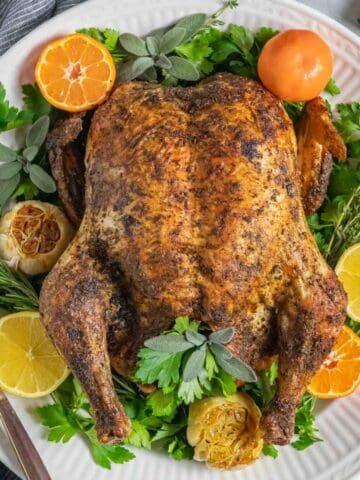
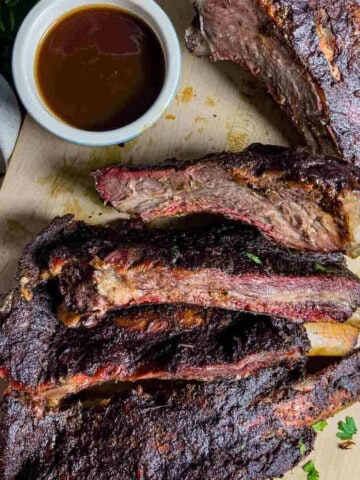
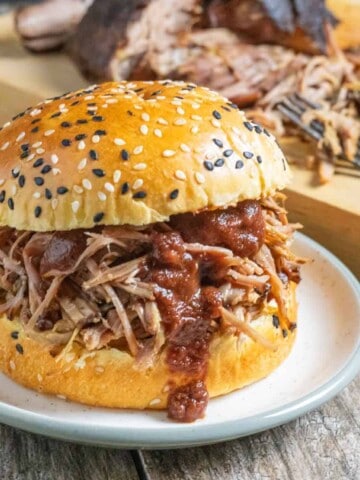
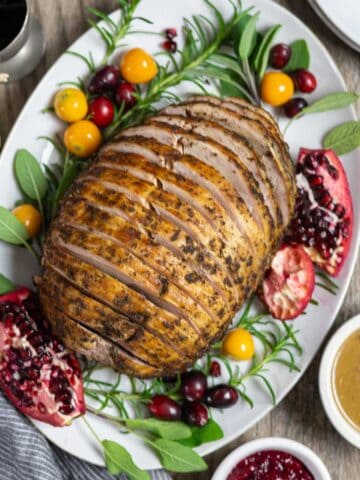

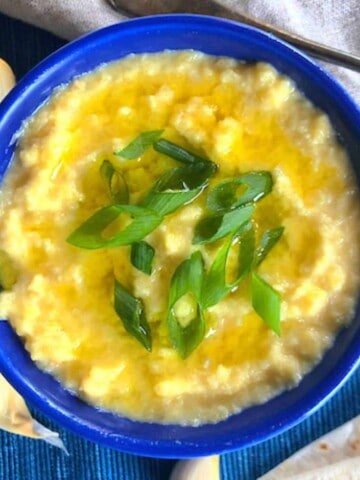

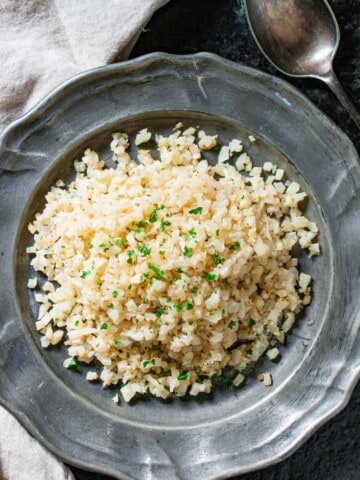
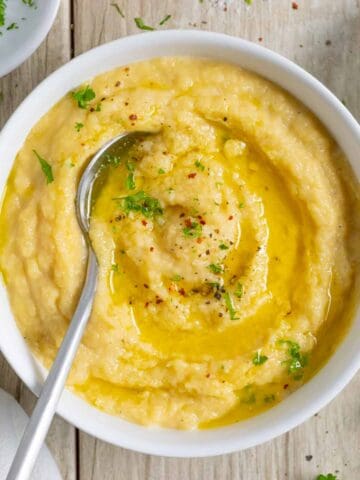
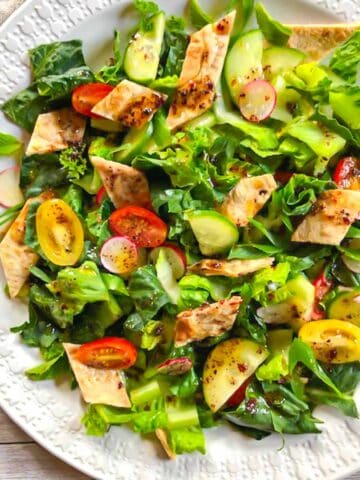
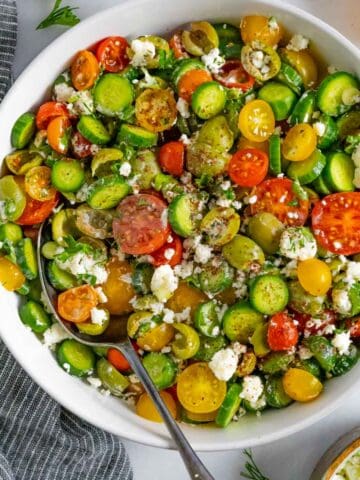

Greg says
I never thought about rutabagas before. I loved this recipe - so much flavor and I love that it's low carb.
Tracey Hatch-Rizzi says
Hi Greg,
I'm so glad you liked it! Rutabagas are a very overlooked veggie, for sure. They're so good!
Best,
Tracey